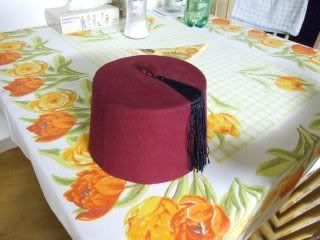PhilS
One of the Regulars
- Messages
- 237
- Location
- Upper West Side Gotham City
This may seem nutty, but I have a hankering for a high quality vintage fez. Anybody got one? Know what to look for?
Mike in Seattle said:Here's one source someone else posted here awhile back and I believe they're tied in with this site as well

 Alden 403 Moc Toe Boot - Brown Chromexcel - $680 The classic "Indy" style Alden Boot in the classic Horween brown Chromexcel.
Alden 403 Moc Toe Boot - Brown Chromexcel - $680 The classic "Indy" style Alden Boot in the classic Horween brown Chromexcel.  Grant Stone Diesel Boot Dark Olive Chromexcel - #395 Goodyear welted, Horween Chromexcel, classic good looks.
Grant Stone Diesel Boot Dark Olive Chromexcel - #395 Goodyear welted, Horween Chromexcel, classic good looks.  Himel Bros. - The Ross Mk. 1 Leather Jacket Classic D-pocket motorcycle/aviator style jacket.
Himel Bros. - The Ross Mk. 1 Leather Jacket Classic D-pocket motorcycle/aviator style jacket. 
MAB1 said:I'll never do it without "The Fez" on.
Steely Dan
This Shriners fez looks pretty good.rgraham said:De Fez is de Bez...
A friend has a bunch, and I even gave up one I bought a few years back to add to his collection. Didn't fit anyway. Shriners are de bomb.

